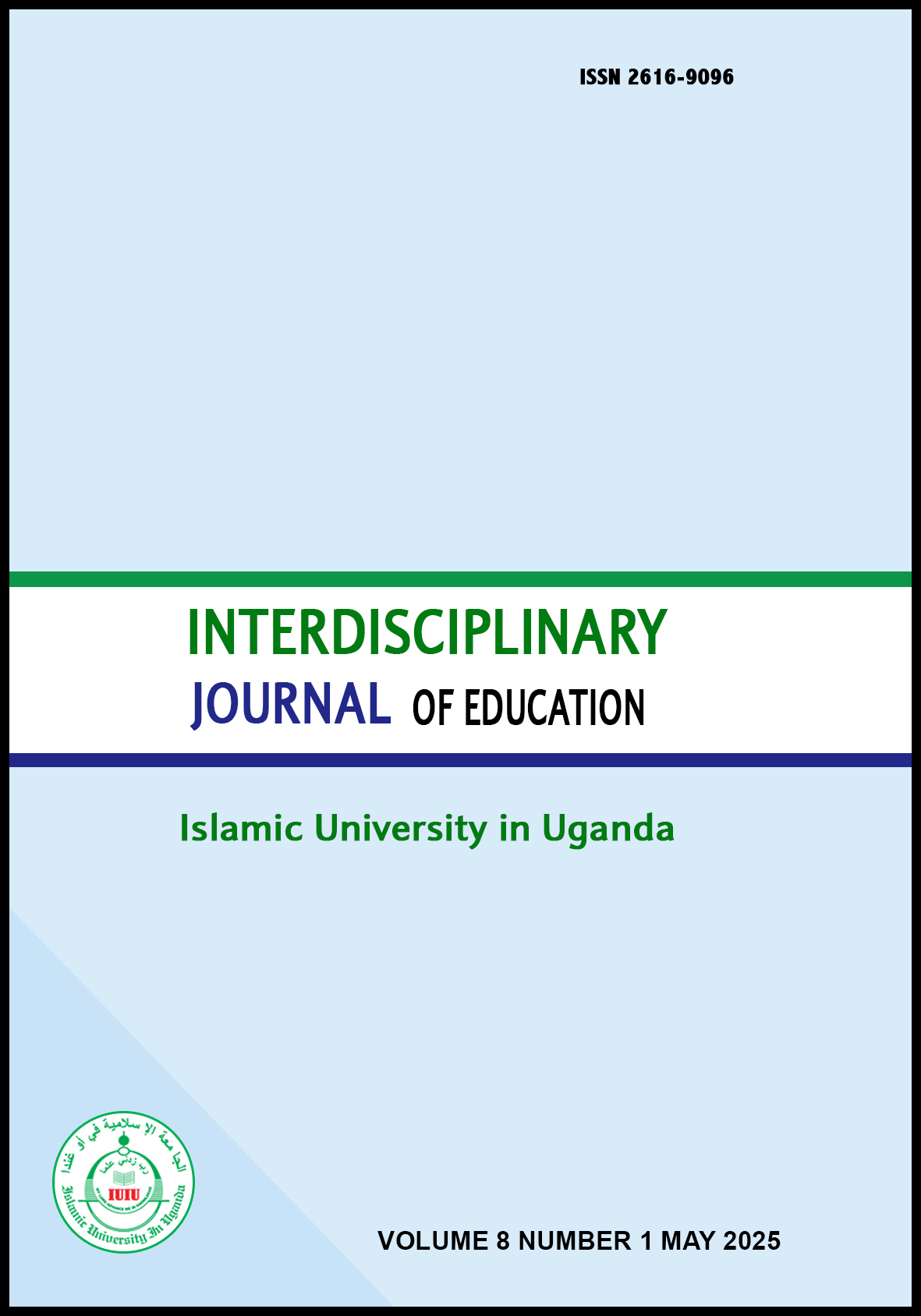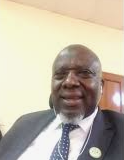Teacher Need, Supply, and Distribution in Public Secondary Schools
Assessing the Gaps and Policy Intervention in Bayelsa State, Nigeria
DOI:
https://doi.org/10.53449/70wh0c26Keywords:
subject specialisation, teacher availability, teacher distribution, teacher needAbstract
The availability of teaching manpower is a valuable investment in education. However, its effective utilization, particularly in terms of equitable distribution across schools and alignment with subject specializations, remains a critical concern. This study examined teacher demand, supply gaps, and distribution pattern in public secondary schools in Bayelsa State. A descriptive research design, the population comprised all teachers in the 195 public secondary schools in Bayelsa State, with a total of 3,723 teachers identified and included in the study. Two research instruments were utilized. First, a researcher-designed checklist was used to assess student enrolment patterns and teacher availability based on data from the Post-Primary Education Board for the 2022/2023 school year. Second, a structured four-item questionnaire was administered to school principals to gather insights on policy interventions related to teacher distribution. The checklist, titled Teacher Needs, Availability, Distribution, and Subject Specialization (TNADSS), the questionnaire, titled Policy Intervention and Effective Teachers Distribution Questionnaire (PIETDQUE) (r = 0.78), distributed through the WhatsApp platform of school principals. Data were analysed descriptively using percentages, means, and Standard Deviation. Findings revealed a significant shortage in the teaching workforce, with a supply deficit of 38.67%. Additionally, teacher distribution based on subject specialization was grossly inadequate, with a notable absence of teachers for Nigerian languages. The study also highlighted intervention policies aimed at addressing ineffective teacher distribution in the state. Based on these findings, the study recommended among others that teachers’ recruitment and distribution should be guided by subject-specific needs, prioritizing critical subjects to enhance educational outcomes.
Downloads
References
Adeoye, M. A. (2000). Basic concepts, nature, and functions of personnel administration. In J. O. Fadepe & P. K. Ojedele (Eds.), Management of Nigeria education: Personnel administration and quality in education (Vol. 5, pp. 1–9). NIEPA Publications.
Adepoju, H. F. (2002). Resource mobilization and management towards a successful implementation of the UBE programme in Nigeria. In T. Ajayi, J. O. Fadepe, P. K. Ojedele, & E. E. Oluchukwu (Eds.), Planning and administration of UBE in Nigeria (pp. 130–136). NIEPA.
Adeyemi, J. K., & Uko-Aviomoh, E. (2003). Teaching manpower requirement for effective education delivery in Nigerian polytechnics. International Studies in Educational Administration, 31(3), 16–28.
Aminu, J. (1992). How fares the cradle of the greatest asset. In D. Yahaya & C. L. Akinyele (Eds.), Human resources development and utilization: Policies and issues (pp. 22–27). ASCN.
Akosubo-Ogori, E. (2023). Assessment of resource provision for implementation of vocational and technical education programmes in Bayelsa State. African Journal of Humanities and Contemporary Education Research, 11(1), 351–366. https://publications.afropolitanjournals.com/index.php/ajhcer/article/view/566
Akyeampong, K., & Lewin, K. M. (2002). From student teachers to newly qualified teachers in Ghana: Insights into becoming a teacher. International Journal of Educational Development, 22(3–4), 339–352. https://doi.org/10.1016/S0738-0593(01)00060-4
Becker, G. S. (1964). Human capital. National Bureau of Economic Research.
Borman, G. D., & Dowling, N. M. (2008). Teacher attrition and retention: A meta-analytic and narrative review of the research. Review of Educational Research, 78(3), 367–409. https://doi.org/10.3102/0034654308321455
Coombs, P. H. (1968). The world educational crisis: A systems analysis. Oxford University Press.
Darling-Hammond, L., & Sykes, G. (2003). Wanted, a national teacher supply policy for education: The right way to meet the “highly qualified teacher” challenge. Education Policy Analysis Archives, 11, 33. https://doi.org/10.14507/epaa.v11n33.2003
Famide, O. A. (2002). Towards a successful implementation of the UBE scheme in Nigeria: A consideration of some planning strategies. In T. Ajayi, J. O. Fadepe, P. K. Ojedele, & E. E. Oluchukwu (Eds.), Planning and administration of UBE in Nigeria (pp. 130–136). NIEPA.
Guarino, C. M., Santibañez, L., & Daley, G. A. (2006). Teacher recruitment and retention: A review of the recent empirical literature. Review of Educational Research, 76(2), 173–208. https://doi.org/10.3102/00346543076002173
Harbison, F. H. (1973). Human resources as the wealth of nations (pp. 3–11). Oxford University Press.
Ingersoll, R. M. (2001). Teacher turnover and teacher shortages: An organizational analysis. American Educational Research Journal, 38(3), 499–534. https://doi.org/10.3102/00028312038003499
Lewin, K. M. (2009). Access to education in sub-Saharan Africa: Patterns, problems, and possibilities. Comparative Education, 45(2), 151–174. https://doi.org/10.1080/03050060902920518
Miller, K. (2002). Resource allocation: Targeting funding for maximum impact. MCREL: A policy brief (Jan. 3, pp. 1–5).
Ofoegbu, F. I. (2004). Teacher motivation: A factor for classroom effectiveness and school improvement in Nigeria. College Student Journal, 38(1), 81–84.
Okebukola, P. A., Suwadu, B., Oladejo, A., Nyandwi, R., Ademola, I., Okorie, H., & Awaah, F. (2020). Delivering high school chemistry during COVID-19 lockdown: Voices from Africa. Journal of Chemical Education, 97(9). https://doi.org/10.1021/acs.jchemed.0c00725
Okendu, J. N. (2012). The role of school board, school heads, and parent-teachers association in the effective management of public schools. Journal of Education and Practice, 3(8), 201–207. http://www.iiste.org
Odland, G., & Ruzicka, M. (2009). An investigation into teacher turnover in international schools. Journal of Research in International Education, 8(1), 5–29. https://doi.org/10.1177/1475240908100679
Onukwu, J. N., & Tiebebedigha, P. F. (2020). Managing teaching manpower for educational transformation of Bayelsa State secondary schools. Trend in Educational Studies, 4(3), 13–24.
Southwest Educational Development Laboratory. (2009). SEDL 2009 Annual Report: Solving problems, changing lives. https://sedl.org/pubs/catalog/items/annualreport2009.html
The National Comprehensive Center for Teacher Quality. (2008). (NPE 2014).
Ugolo, S. P. (2010). Assessment of education resources situation and utilization in Bayelsa State public secondary schools [Unpublished PhD thesis]. University of Benin.
Ugolo, P. (2022, February 6–10). Assessment of teacher need, supply, and distribution to primary and secondary schools: Facts, challenges, and prospects in Bayelsa State. Paper presented at the Bayelsa State Government 1st Education Summit, Ministry of Education.
Ugolo, S. P., & Alonge, H. O. (2024). Teacher availability, supply and distribution in primary schools in Bayelsa State. European Journal of Education Studies, 11(3), 76–85.
UNESCO. (2015). Teacher policies and learning outcomes: The imperative for Africa. United Nations Educational, Scientific and Cultural Organization.
UNESCO. (2021). The global teacher shortage: Addressing challenges in recruitment, retention, and deployment. United Nations Educational, Scientific and Cultural Organization.
World Bank. (2019). Addressing the global learning crisis: What policies and practices make a difference? World Bank Group.
Downloads
Published
Issue
Section
License
Copyright (c) 2025 Stella Peremoboere Ugolo, James Onukwu

This work is licensed under a Creative Commons Attribution-NoDerivatives 4.0 International License.








